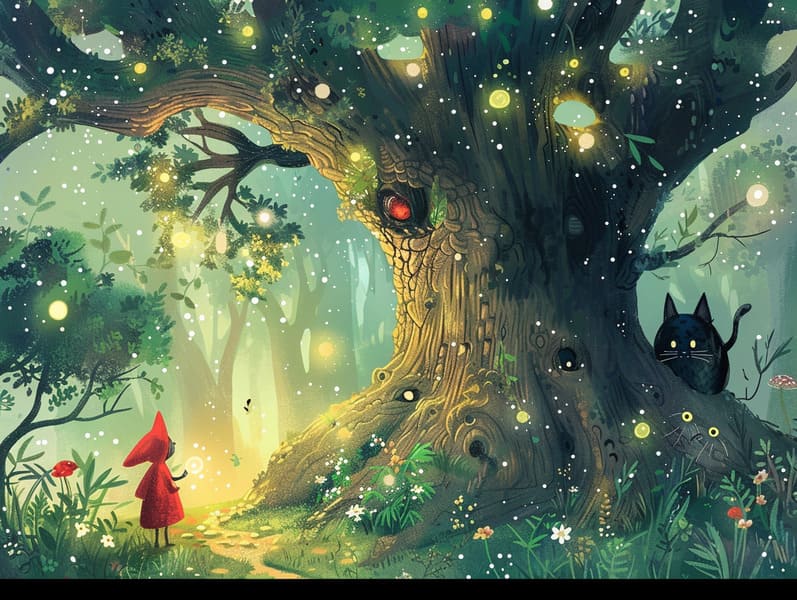The Origins of Timeless Fairy Tales and Their Perpetual Attraction.
The Origins of Timeless Fairy Tales and Their Perpetual Attraction.
Blog Article

Best fairy tales have historical significance. These stories have been told from one generation to the next ages before they were ever recorded. They arose from a variety of cultures, including Eastern traditions. They were initially shared among adults, often carrying themes and messages aligned with the societal norms and beliefs of the time.
The Brothers Grimm, Jacob and Wilhelm (the Grimm brothers), were among the first to compile and release many of these beloved fairy tales. Their published works, "Grimm's Fairy Tales," included tales like "The Little Glass Slipper," "The Story of Hansel and Gretel," and "Little Snow White," which have since become staples in the world of timeless fairy tales. Similarly, H. C. Andersen's imaginative tales, such as "The Little Mermaid," and "The Duckling that Could," have floated into hearts worldwide, cementing their place in the pantheon of beloved fairy tales.
Despite their historical roots, these tales remain as significant as ever, especially as kids' bedtime tales. These enchanting tales are now available in multiple formats, including gorgeously illustrated books, delightful animations, and online storybooks.
Their persistent charm can be linked to several captivating elements:
Ethical Lessons: Timeless fairy tales often illustrate important moral lessons. Tales like "The Story of the Boy Who Cried Wolf" teach the benefit of truth, while "The Tortoise and the Hare" underline the merits of persistence and unassuming nature. These stories offer young ones clear distinctions between moral and immoral, building their moral compass in a tender yet meaningful way.
Empathy and Awareness: Classic fairy tales frequently depict protagonists facing trials and tribulations, motivating young listeners to resonate with their struggles and root for their triumphs. For instance, "The Tale of Beauty and the Beast" demonstrates the benefit of appreciating inner worth to comprehend the true being of a soul, advancing perception and comprehension.
Cultural Appreciation: Many ancient fairy tales are infused with the cultural contexts from which they arose. Engaging with these stories can provide enlightening views into different social structures, building a sense of world understanding and respect.
Fantasy and Imagination: The imaginative elements in classic fairy tales—mythical entities—foster children’s imaginative ideas. These stories lead readers to imaginary realms, fostering inventive ideas and a sense of magic that persists a lifetime.
Old fairy tales are not only magical but also edifying. They work as delightful tools in promoting various thinking and feeling skills in the young. When ancient fairy tales are narrated, they boost verbal skills by teaching new terms and intricate sentence structures. This practice also strengthens listening skills and attentiveness, as the young focus on every detail, expectant to see what happens next.
Furthermore, reflecting on the themes and characters of traditional fairy tales can cultivate logical thinking and critical thinking. Kids are shown to discover patterns, predict happenings, and grasp cause and effect. These contemplations also assist kids verbalize their thoughts and feelings, strengthening their emotional intelligence.
In today’s high-tech era, the existence of online fairy tales has made these stories more available than ever. Web platforms and digital apps provide huge assortments of classic fairy tales that can be accessed or listened on anytime, anywhere. Fairy tales recited are particularly well-liked, supplying an fun way for the young to engage with these delightful tales. Voice books and read-to-me stories take characters and settings to life, often paired with charming sound effects and soundtracks that improve the storytelling journey.
The unending appeal of old fairy tales lies in their ability to shift to new eras while retaining their core values. Contemporary retellings of these fairy tales often highlight more different figures and modern settings, making them relevant to today’s audience. However, the fundamental themes of valor, kindness, and fair play remain unchanged, continuing to appeal to audiences of all ages.
Classic fairy tales also offer a sense of comfort and knowability. They put out a ordered narrative with a clear beginning, middle, and end, often coming to a close with the closure of conflicts and the triumph of right over wrong. This predictability can be reassuring for kids, giving a sense of security in an fluctuating world.
Timeless fairy tales continue to fascinate and instruct new generations, maintaining their delight and importance in modern society. As kids' bedtime tales, they disclose a perfect blend of wonder and wisdom, boosting moral values, empathy, and creativity. The accessibility of online fairy tales and the well-liked nature of fairy tales spoken ratify that these traditional tales remain obtainable to new generations.
By holding onto and spreading these tales, we continue to appreciate the rich tapestry of myths and cultural heritage. Whether you are discovering a richly illustrated book, enjoying a web-based collection, or listening on an spoken story, the splendor of old fairy tales is always within reach. These fairy tales teach us of the timeless spell of fairy tales and its ability to draw us together across time and space.
Regardless if you are viewing a colorful picture book, enjoying a digital collection, or listening fairy tales for kids on an read-aloud story, the fascination of classic fairy tales is always within reach.
These stories highlight of the everlasting effect of fairy tales and its ability to bind us across epochs and places, creating a bond that charms and informs alike.